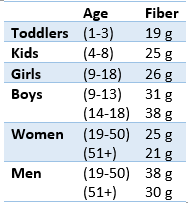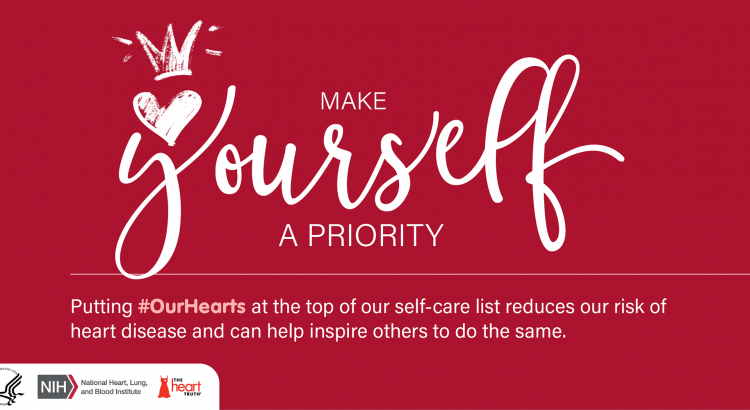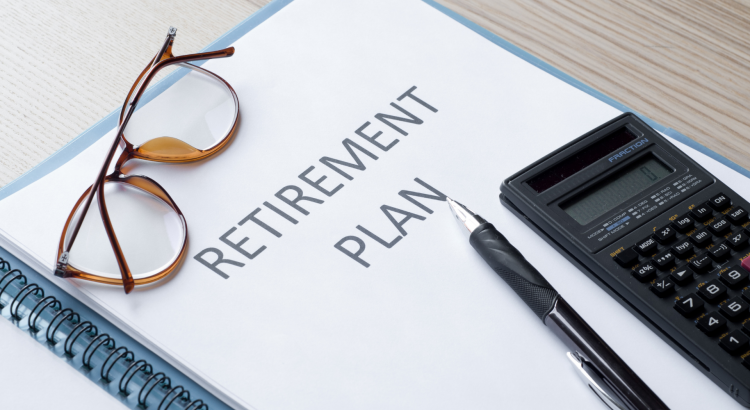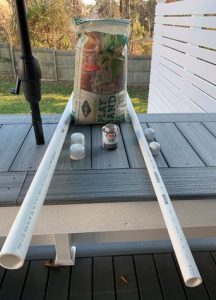National Nutrition Month is an annual campaign created by The Academy of Nutrition and Dietetics. During March, everyone is invited to learn about making informed food choices and developing healthy eating and physical activity habits. Join the “Personalize Your Plate” Campaign with weekly tips on meal planning, adding variety to your diet, and nutrition through all stages of life. Visit the Fitness and Wellness Division’s SharePoint site to find these tips and more
Keep reading to learn more about fiber and easy ways to boost fiber in your daily diet.
What Is Fiber?
Dietary fiber is the part of foods that the body cannot digest or absorb. It is found naturally in plant-based foods including whole grains, fruits, vegetables, and beans, and legumes. Fiber is not broken down and instead passes through your body relatively intact. There are two different types of fiber, each with its own benefits:
Soluble fiber (dissolves in water)
- Lowers blood cholesterol.
- Lowers blood sugar.
- Sources include oatmeal, peas, beans, apples, oranges, carrots, and barley.
Insoluble fiber (does not dissolve in water)
- Promotes movement of food through the digestive system.
- Increases stool bulk.
- Sources include whole-wheat flour, wheat bran, vegetables, nuts, and beans.
Why Do We Need Fiber?
Diets rich in fiber are associated with many health benefits. Fiber helps keep you feeling fuller longer, which helps prevents overeating and hunger between meals. The soluble fiber in oatmeal, beans, and flaxseed can help lower LDL (“bad”) cholesterol levels. Fiber slows down the digestion of food and keeps blood sugar from rising too quickly. It also adds bulk to your stools to keep waste moving through your intestines, preventing constipation.
How Much Fiber Do I Need?
Fiber is an important part of a balanced diet, yet 95% of Americans do not meet dietary fiber intake recommendations. The average target is about 25-35 grams of fiber per day but varies depending on your age.

Power Fibers
Getting enough fiber each day is not difficult if you eat a variety of fruits and vegetables and whole grains. Use these foods and portion sizes as a guide.
- Chia seeds – 1 ounce (2 Tbsp) = 10.5 grams
- Flaxseeds – 1 ounce = 8 grams
- Almonds – 1 ounce (~23 almonds) = 3.3 grams
- Raspberries – 1 cup = 8 grams
- Pear – with skin = 6 grams
- Apple – with skin = 4 grams
- Whole-wheat spaghetti, cooked – 1 cup = 6.3 grams
- Bran flakes cereal – ¾ cup = 5.5 grams
- Instant oatmeal, cooked – 1 cup = 4 grams
- Whole-Wheat English Muffin – 1 whole muffin = 4 grams
- Air-Popped Popcorn – 3 cups = 3.6 grams
- Brown rice – 1 cup = 3.5 grams
- Green peas, boiled – 1 cup = 8.8 grams
- Black beans, cooked – ½ cup = 7.5 grams
- Baked Potato – 1 medium baked potato with skin = 4 grams
- Black beans, cooked – ½ cup = 7.5 grams
- Brussel sprouts, boiled – 1 cup = 4 grams
Try some of these easy and tasty ways to increase the amount of fiber you eat. Be careful, if you do not eat much fiber now, make gradual changes to the amount of fiber in your diet. Increasing the amount of fiber too quickly can cause gas, bloating, and abdominal cramps.
- Choose a breakfast cereal with 5+ grams of fiber per serving and top it with strawberries, raspberries, or blueberries.
- Enjoy fruits and vegetables throughout the day – aim for at least 5 servings.
- Eat more beans, peas, and lentils. Add them to soups, salads, and casseroles.
- Enjoy a handful of dried fruit, nuts, or air-popped popcorn as a snack.
- Substitute whole-wheat flour for half of the white flour your recipe calls for when you are baking.
- Enjoy whole-grain bread. Look for the ingredient terms “whole wheat”, “whole-wheat flour”, or “whole grain” as the first ingredients on the label and for at least 2 grams of fiber per slice.
- Eat the peel! Taking the peels off fruits and vegetables reduces the amount of fiber.
- Switch to brown rice or whole-grain pasta instead of white rice or pasta.
- Choose whole fruit instead of drinking juice. You will get more fiber and consume fewer calories.
Fiber Face-Off
Here are a few examples of great-tasting fiber-rich foods readily available and how you can “power-up” your preferred food choices. On the left are examples of commonly eaten foods. The options on the right are power-up versions of the same food. The hope is when you see the power-ups you will say “Wow! it really is easy to eat more fiber”-and, “I can do that!”




 Jeanne Moutoussamy-Ashe, Ashe’s widow, welcomed the plans for Woodland Cemetery and expressed gratitude to its new owners and Henrico. “Many leaders in Richmond’s African American community are buried at Woodland Cemetery, including my late husband, Arthur Ashe. I support these efforts to restore the Cemetery and unlock the rich stories of those buried there. A holistic understanding of Richmond’s poignant history may be the best way to lead us all into the future.”
Jeanne Moutoussamy-Ashe, Ashe’s widow, welcomed the plans for Woodland Cemetery and expressed gratitude to its new owners and Henrico. “Many leaders in Richmond’s African American community are buried at Woodland Cemetery, including my late husband, Arthur Ashe. I support these efforts to restore the Cemetery and unlock the rich stories of those buried there. A holistic understanding of Richmond’s poignant history may be the best way to lead us all into the future.”



 The sandbag is the easiest of the three pieces to make so let us start there. For making the sandbag you will need a bag of sand (purchased at any big box home store for less than $5), two trash bags, a roll of duct tape, and a duffle bag/gym bag. To start, you need to figure out how heavy of a sandbag you would like to make and pour out sand to get your desired weight. Now with the desired weight in the sandbag, duct tape the opening to keep the remaining sand from spilling out. Next put the bag into the first of two trash bags. Duct tape that bag and then put the second trash bag over everything. Now you want to duct tape everything especially well and then put the whole thing into a duffle bag/gym bag, and you are done.
The sandbag is the easiest of the three pieces to make so let us start there. For making the sandbag you will need a bag of sand (purchased at any big box home store for less than $5), two trash bags, a roll of duct tape, and a duffle bag/gym bag. To start, you need to figure out how heavy of a sandbag you would like to make and pour out sand to get your desired weight. Now with the desired weight in the sandbag, duct tape the opening to keep the remaining sand from spilling out. Next put the bag into the first of two trash bags. Duct tape that bag and then put the second trash bag over everything. Now you want to duct tape everything especially well and then put the whole thing into a duffle bag/gym bag, and you are done.  This one is a little more involved and requires a bit more patience. For this, you will need a basketball ($5 new from Five Below or any discount store or use an old one), sand, funnel, razor blade, sticky tire plug x 2-3, and duct tape. To start you want to cut a small hole in the basketball (the smaller the better- this one was a little bigger than I would have liked because I couldn’t find my smaller funnel). Once you have your hole cut you just start funneling sand into the ball until you get to your desired weight (max weight is around 25 pounds based on the size of the ball).
This one is a little more involved and requires a bit more patience. For this, you will need a basketball ($5 new from Five Below or any discount store or use an old one), sand, funnel, razor blade, sticky tire plug x 2-3, and duct tape. To start you want to cut a small hole in the basketball (the smaller the better- this one was a little bigger than I would have liked because I couldn’t find my smaller funnel). Once you have your hole cut you just start funneling sand into the ball until you get to your desired weight (max weight is around 25 pounds based on the size of the ball).  Out of the gate, these body bars can be highly variable based on your objective. Supplies needed for this are PVC (length and diameter will dictate max weight), two end caps for each bar, sand, and PVC cement, funnel (optional). Pre-cut (as pictured) PVC was used. Pictured on the left is PVC measuring 5 feet by 1.5 inches and on the right is PVC measuring five-feet by 1.0 inch. To start, use the PVC cement and cement one end cap onto the pipe and let it dry. Once the cement is dry fill the PVC with as much sand as you desire. Completely filling the 1.0-inch pipe led to a bar weighing about 8 pounds and filling the 1.5-inch pipe fully led to a bar weighing about 15 pounds. Once you fill the bar to your desired weight use the PVC cement to seal the open end.
Out of the gate, these body bars can be highly variable based on your objective. Supplies needed for this are PVC (length and diameter will dictate max weight), two end caps for each bar, sand, and PVC cement, funnel (optional). Pre-cut (as pictured) PVC was used. Pictured on the left is PVC measuring 5 feet by 1.5 inches and on the right is PVC measuring five-feet by 1.0 inch. To start, use the PVC cement and cement one end cap onto the pipe and let it dry. Once the cement is dry fill the PVC with as much sand as you desire. Completely filling the 1.0-inch pipe led to a bar weighing about 8 pounds and filling the 1.5-inch pipe fully led to a bar weighing about 15 pounds. Once you fill the bar to your desired weight use the PVC cement to seal the open end. 

